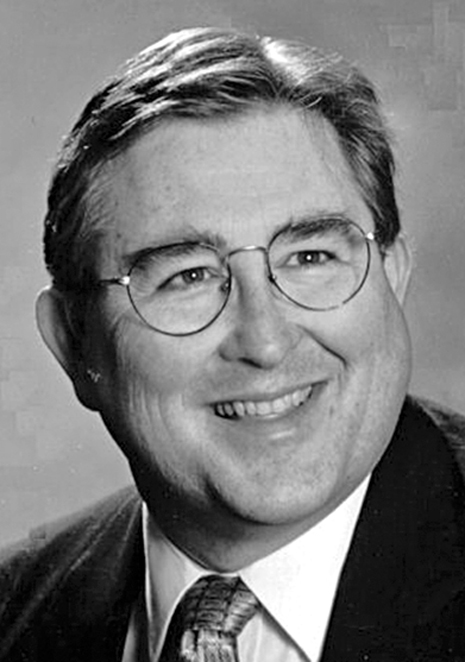By Danny Crownover
Last week, The Vagabond discussed the Alabama Steel and Wire Company. This week, we add more to it and discuss how the Alabama Power Company helped bring the Goodyear Tire & Rubber Company to the area.
Gadsden owes a tremendous debt of gratitude to Alabama Power. But for the company’s financial and moral support and backing, the city would not have one of the largest steel mills in the south and probably would not have the largest Goodyear plant.
Back in 1902, Captain W.P. Lay, who had been active in the promotion of waterpower for industrial purposes, learned that the Alabama Steel and Wire Company, which operated a wire mill in Birmingham, was seeking a location for a steel mill. Lay promptly got in touch with the responsible persons and enlisted their interest in Gadsden.
The late John R. Hornady, who wrote the book Soldiers of Progress and Industry while he was editor of a local newspaper, told the story for the first time, an authentic account that was unbelievably strange in many ways.
“Convinced that he could obtain the steel plant if a suitable site were offered. Lay found the right property and called a meeting of representative citizens. He told them that he had something good for the city but was not permitted to mention what it was. To obtain it, Lay would have to raise $35,000 to buy the site. With no other information, the citizens subscribed the amount required. The steel mill came to the area, and Captain Lay succeeded in investing capital in building the first power plant of the Alabama Company.
“Years went by, and then came the announcement that the steel mill was in the hands of a receiver and had ceased operations. Then came word that engineering experts had recommended the scrapping of the plant and the liquidation of the enterprise.
“Captain Lay and the minority stockholders declared that the industry should not be abandoned, and he demanded a second survey by a different firm of engineers, and that plan was agreed upon. Accordingly, the engineering firm of Coverdale & Colpits of New York was engaged. The report of that firm was carefully guarded so that outsiders were unable to learn the nature of its contents. However, Captain Lay happened to meet a friend in Birmingham who had access to a copy of the report, a loan of which was obtained for a half a day.
“Upon examination, Captain Lay found that the report recommended not the abandonment of the enterprise but the elimination of certain obsolete holdings in other communities, the acquirement of more coal and iron lands and the substitution of hydro-electric for steam power. The report called attention to the fact that the Alabama Power Company was making arrangements to supply the electric current and suggested that the steel company contract for it.
“The fly in the ointment, however, was the further recommendation that $2,500,000 be raised for the rehabilitation. That looked bad, because the bankers behind the steel company had gone on record as saying they would not spend another dollar on the facility.
“Captain Lay copied the important paragraphs of the report and sent the papers to James Mitchell, an Englishman who had financed the power company. Mitchell went to see the bankers, who told him that they intended to allow the steel plant to be liquidated.
“Mitchell urged that that would be a mistake and concluded the interview by saying that he would put half a million dollars into the project if the bankers would go ahead as recommended by Coverdale & Colpits.
“Mitchell’s faith was so evident, and he was so sure that the project could be made successful, that the bankers decided to put up the money for rehabilitation. That is how Captain Lay and the Alabama Power Company saved the steel plant for Gadsden in 1913-1914.
“Coverdale & Colpits, became interested and finally took over the property until 1937, when the Republic Steel Corporation became the of the steel plant. W.H. Coverdale soon became the plant’s president, and things hummed. Republic Steel eventually employed over 6,000 persons.
“Those close to the negotiations that brought the Goodyear Tire & Rubber Company to Gadsden recalled that Alabama Power was interested only in bringing the plant to Alabama, being completely neutral so long as more than one Alabama community was being considered.
When, however, the question of a site narrowed down to Gadsden and Atlanta, Ga., the company stepped in and helped Gadsden.
“Up until the last moment, it looked as if the plant would go to Atlanta. The stumbling block for Gadsden was the requirement to furnish the site and organize a housing corporation to build 500 homes for the employees.
“The committees in charge simply could not sell all of the shares in the corporation. Just when it appeared that Gadsden would have to give up, Alabama Power stepped in and subscribed for stock that called for a cash expenditure of $312,500. That subscription was quickly followed by the official announcement that Goodyear would come to Gadsden. Thus, the Alabama Power Company was largely responsible for success of two of the largest industries in the south in Gadsden.”




